Deirdre Jackson • The Morgan Library & Museum
Recommended citation: Deirdre Jackson, “Work and Workers in Alfonso X’s Cantigas de Santa Maria,” Different Visions: New Perspectives on Medieval Art 10 (2023). https://doi.org/10.61302/XSEE9369.
Among the most abundant and compelling sources of information about laborers are medieval miracle tales. Compiled throughout Europe, these disparate collections in Latin and vernacular languages, offer us valuable perspectives on the potential hazards and hardships of work. Often based on oral testimony, miracle tales shed light on the ways men and women coped with challenges ranging from industrial accidents to crop failure.
The Cantigas de Santa Maria
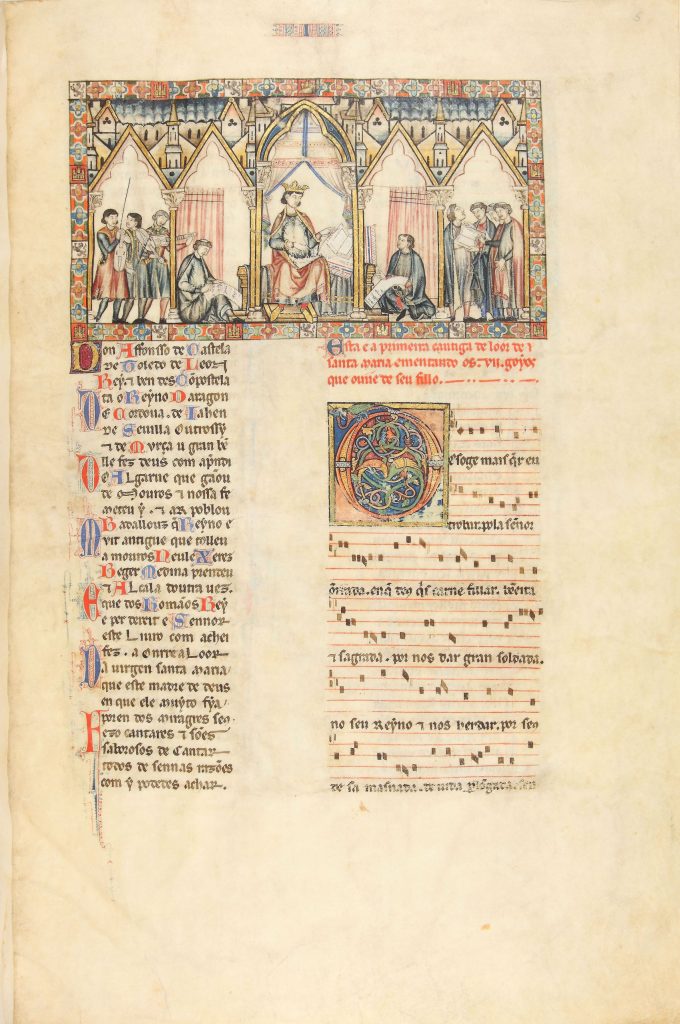
Fig. 1. Alfonso X (r. 1252-1284), Cantigas de Santa Maria, T: El Escorial, Real Monasterio de San Lorenzo, MS T.I.1, fol. 5r.
Created by and for King Alfonso X of Castile-León (r. 1252-1284), the Cantigas de Santa Maria (Songs of Holy Mary, henceforth CSM), the largest, richest, and most complex medieval collection of miracles of the Virgin Mary, has long been regarded as an exceptional source of information on work and workers (Fig. 1). Not only does the CSM reflect aspects of work in general, but it also shows Alfonso X and his collaborators engaged in the specialized task of composing songs in the Virgin Mary’s honor. As depicted one of the prefatory images (Fig. 2), clerics and minstrels (jongleurs) assist the king in composing the work, but he is the catalyst, seated at the center, dictating the song lyrics.[1] Typically, medieval dedication scenes show royal patrons being presented with completed books by authors or translators, but this image shows the king working alongside his collaborators; he is not a detached patron, but an author and maker.[2]

Fig. 2. Alfonso X (r. 1252-1284), Cantigas de Santa Maria, T: El Escorial, Real Monasterio de San Lorenzo, MS T.I.1, fol. 5r (detail).
Some scholars have posited that Alfonso X, in commissioning the CSM, was engaged in a conscious effort to preserve and record the customs and experiences of his subjects,[3] while others have rightly rejected the idea that Alfonso X and his collaborators “were committed cultural historians of their own moment, trying to provide a visual time capsule of medieval Spain.”[4] The abundance of information about daily life can be explained, to some extent, by the genre. Miracle tales feature a wide variety of situations and settings, while relying on a basic narrative formula: a person or group of people in need of aid, a documented problem, and a miraculous solution. Credible representations of people from all ranks of society, including the laboring classes, enrich and animate this extraordinary work. Some workers have only their labor to sell, but others own property and capital, which suggests that our definition of the medieval working classes needs to encompass a broader range of economic conditions than Marx’s proletariat, defined as individuals lacking the means of production.
The CSM is preserved in four related manuscripts (To, T, F, and E) produced in Alfonso X’s lifetime and representing different phases in the collection’s evolution.[5] The making of this vast corpus of Marian songs (cantigas) occupied the king throughout his reign, and at least three of the four surviving codices, the sole witnesses to this ambitious project, were produced in his royal scriptorium, almost certainly at Seville. Collectively, these manuscripts contain 420 separate compositions: an introductory poem and prologue, two epilogues, 43 songs of praise (loores), 16 songs for feast days (festas), and 356 songs recounting the Virgin’s miracles (cantigas de miragres) — which are my focus here.[6] Written in rhyming verse, in Galician-Portuguese, the dominant poetic language in the center and west of the Iberian Peninsula from the twelfth to the fifteenth century, the songs were set to music so they could be performed. All but four of the songs have extant notation, making the CSM “one of the largest unified bodies of musically notated medieval song.”[7]
Designed as a two-volume set, T and F contain extensive cycles of miniatures illustrating the song’s contents, although F, the second of the two, was left unfinished on the king’s death in 1284.[8] Most collections of medieval miracles are unillustrated, so the abundance of visual information offered by these two volumes is unparalleled. Workers drawn from diverse socioeconomic backgrounds are the main protagonists of around 40 of the 356 miracle songs and they play supporting roles in others. Scholars have long recognized the archaeological value of the CSM, and gleaned the miniatures for information on tools, clothing, furnishings and buildings used by medieval workers.[9] Some have also focused on specific professions represented in the illuminated manuscripts.[10] Few, however, have addressed the broader issue of the messages inherent in the miracles about laborers that were incorporated in the CSM. As demonstrated here, the CSM not only features a broad spectrum of workers, but also sheds light on their beliefs, interpersonal relationships, predicaments and hardships.
The Sources of the CSM
As the CSM project evolved, Alfonso X and his collaborators drew on a wide range of material. They based some cantigas on traditional miracle tales recounted for centuries throughout Europe and included in both Latin and vernacular sources. Large Latin compilations of the Virgin’s miracles (Mariales) were produced in the twelfth century, and it is probable that one or more of these shaped Alfonso’s vision for the CSM, in addition to serving as the source for individual songs. References to the itinerant king, members of his family, his courtiers and contemporaries occur in the lyrics of numerous songs and others are written in the first person, giving them the immediacy of eye-witness accounts.[11] Other miracle tales were derived from libelli miraculorum (books of miracles) compiled at the Virgin’s sanctuaries in the Iberian Peninsula and beyond.[12] In many cases, the original shrine collections do not survive, making the CSM the only witness to the prodigies associated with those locales. Even when shrine collections have been preserved, they invariably lack illustrations, so the CSM provides a unique pictorial record. Because the makers of the CSM cast a wide net, the text and miniatures do not only tell us about work and workers in thirteenth-century Castile, but also about beliefs and patterns of behavior, rituals, gestures, and popular practises common to workers across Europe.
Workers in the CSM
Despite its royal origins and conceptual sophistication, the CSM derives much of its appeal from its treatment of working class individuals confronting understandable problems — the stonemason who slips off a high wall (Fig. 3), the baker who runs out of dough, the farmer whose favorite cow runs away (Cantigas 258, 249, and 31 respectively).
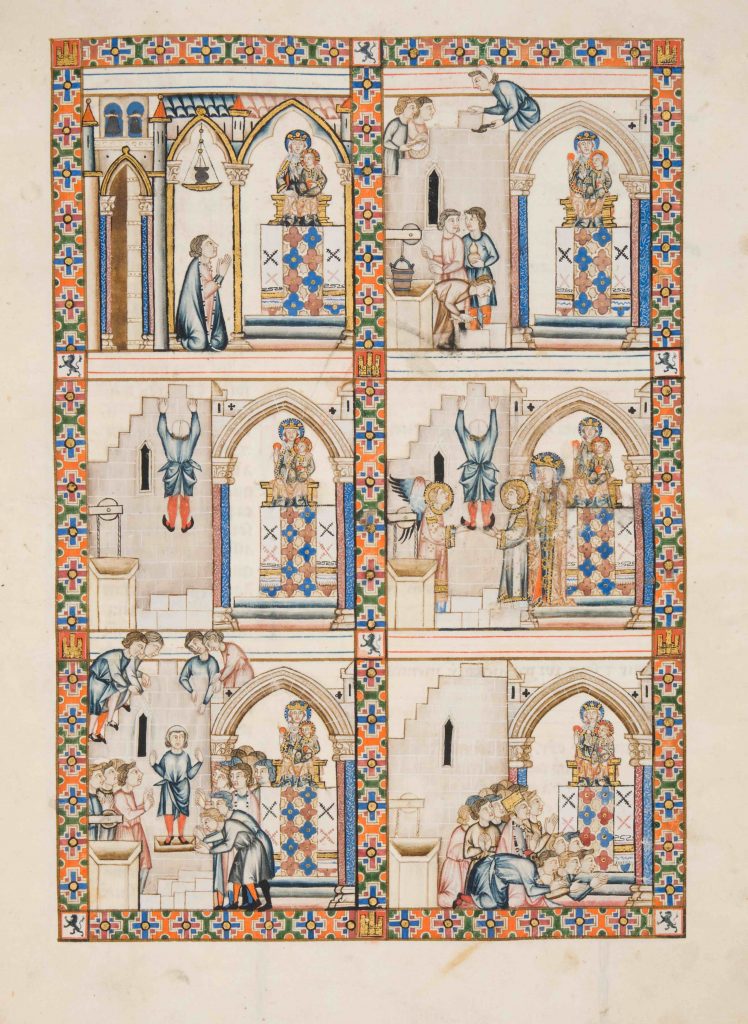
Fig. 3. Cantigas de Santa Maria, F: Florence, Biblioteca Nazionale Centrale, Banco Rari 20, fol. 88r.
More sensational is Cantiga 213, about Don Tomé, a teamster who makes his living conveying goods to market. As shown in the accompanying miniature, whenever he is away on business, his wife sleeps with other men (Fig. 4). Don Tomé’s occupation supplies the reason for his absence, but we learn nothing about his job apart from the fact that “gannava grand’ algo con sas bestias que tragia, / carrejand’ en elas vynno e farina e ceveyra” (“he earned a great deal of money with the beasts that he drove, carrying wine, meal and grain on them.”).[13] In fact, in the second panel of the miniature which shows him embracing his wife before setting off, only the hind quarters of the beasts are shown as they race out of the picture. In this story, the worker’s personal life provides the central drama. Workers in the CSM are portrayed in a relatable way, and the wealth of contextual information supplied by the texts and images offers us unique insights into their mindsets and lived experience. Both the content and tone of the songs, replete with evocative details, invite an empathetic response.

Fig. 4. Cantiga 213 (F 89), F: Florence, Biblioteca Nazionale Centrale, Banco Rari 20, fol. 113v.
We are told, for example, that a very rich merchant from Portugal, the protagonist of Cantiga 267, selects gifts for the Virgin in the same way that a person might choose a present to bring home to their spouse or lover.
Como quer que el pelas terras mercasse,
se dõa fremos’ e aposta achasse
e que pera o altar lle semellasse,
de lla aduzer era muit’ entregado.
Wherever he went to buy and sell his goods,
if he found a beautiful and tasteful gift
which seemed to him suitable for the altar,
he always tried to take it to Her.[14]
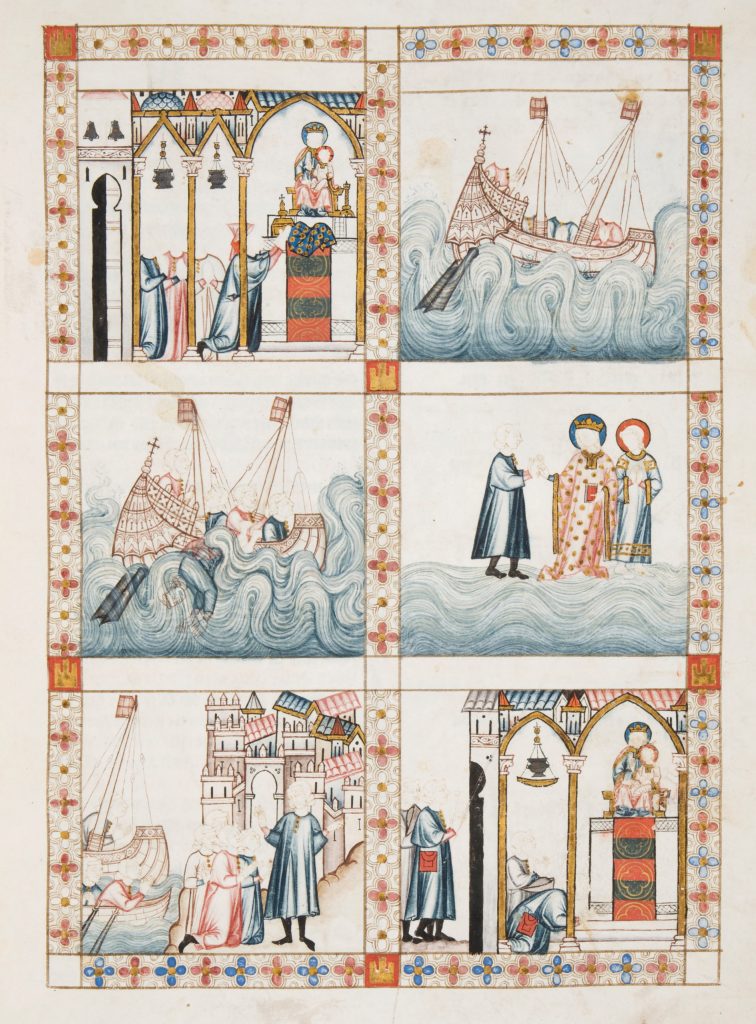
Fig. 5. Cantiga 267 (F 53), F: Florence, Biblioteca Nazionale Centrale, Banco Rari 20, fol. 71r.
One day when he had loaded his ship with merchandise and was sailing up the Atlantic coast towards Flanders, a great storm arose and he was swept overboard. As the merchant sank into the waves, he asked the Virgin to save him. She calmed the sea, drew him out of the water, and carried him to his intended destination. There he rejoined his astonished shipmates who took ten days to make the same journey. Although the accompanying miniature is unfinished, it ably conveys the action in a sequence of six panels reading from left to right and top to bottom (Fig. 5). Having made an offering to the Virgin, and disembarked in his ship, the hapless merchant is tossed into the billowing waves. As he plunges into the depths, head over heels, his body is visible through the transparent washes of paint skillfully deployed to depict the surging sea. Most spectacularly, the fourth panel shows him walking on water as Mary, accompanied by an angel (a detail not mentioned in the text), approaches him and leads him to dry land. The means of rescue typifies the personal tone of the CSM. Although she wears a golden crown, her attribute as Queen of Heaven, the Virgin extends her mercy to the merchant and even clasps his hand.
The final panels show him reunited with his seafaring companions, and later making a promised pilgrimage to the famous shrine of the Virgin in Rocamadour, France. This miracle has no analogue in the extant collections from Rocamadour, and it is probable that the shrine is mentioned due to its prominence alone, since it was one of the most active Marian pilgrimage sites in the Middle Ages. The reference to the French shrine underscores the international outlook of the merchant whose trade takes him from Portugal to northern Europe.
Alfonso X and the Silkworker
Some miracles hinge on King Alfonso X’s personal encounters with workers, revealing interactions and political dynamics that reflect social hierarchies and royal agendas. In fact, Cantiga 18, the very first miracle tale in which he is mentioned, concerns a woman in Segovia “que muito sirgo criar / en ssa casa fazia” (who produced much silk in her home).[15] The events are depicted in a miniature made up of six consecutive panels with explanatory captions above each one (Fig. 6).

Fig. 6. Cantiga 18, T: Escorial MS T.I.1, fol. 30v.
The woman discovered that her silkworms were ill and many had died. Appealing to the Virgin, she vowed to give a length of silk for a veil to adorn Mary’s statue, if she would heal them. As shown in the first panel of the miniature, taking the ailing silk worms to the church with her, the woman prayed to the Virgin, kneeling before the statue (Fig. 7). The silkworms were duly cured, but she neglected to fulfil her vow. Much later, while praying in church on the Feast of the Assumption, she recalled her broken promise and was filled with regret.
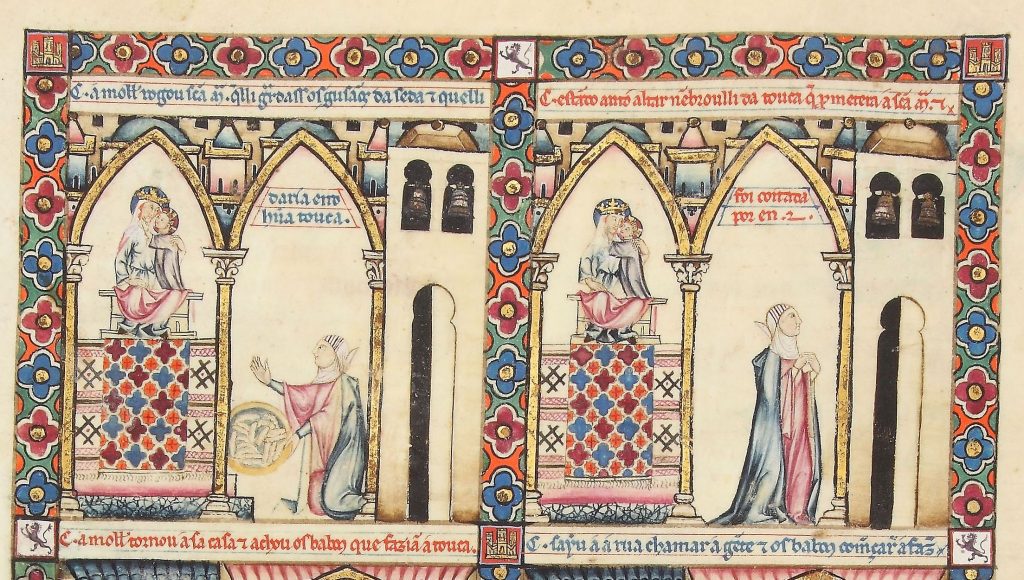
Fig. 7. Cantiga 18, T: Escorial MS T.I.1, fol. 30v (detail), panels 1& 2.
Arriving at her home she found that her silkworms, with a little prodding from the Virgin, had woven not one, but two veils (Fig. 8). Alfonso X, who learned of the prodigy, is shown in the final panel, holding one of the veils aloft (Fig. 9). As explained in the song lyrics, he took the most beautiful of the two, enshrined it in his chapel in Segovia (i.e. the chapel in his palace) and brought it out on holy days “por toller eregia / dos que na Virgen dultar / van per sa gran folia” (“to eradicate heresy in those who foolishly doubt the Virgin”).[16]
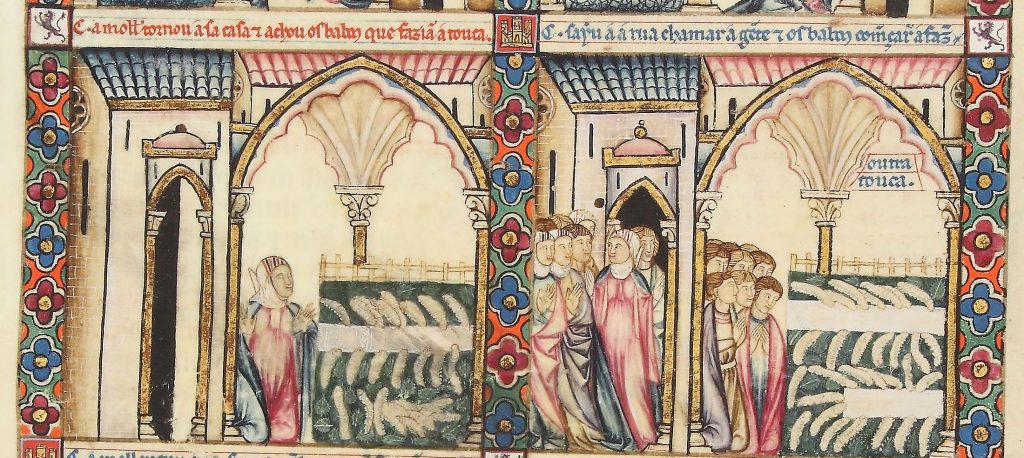
Fig. 8. Cantiga 18, T: Escorial MS T.I.1, fol. 30v (detail), panels 3 & 4.

Fig. 9. Cantiga 18, T: Escorial MS T.I.1, fol. 30v (detail), panels 5 & 6.
King Alfonso X and the female silk producer, from opposite ends of the social spectrum, are united in their acknowledgement of the miracle. Alfonso X validates the prodigy, giving it royal approval and recording it for posterity. They are never depicted together in the same panel of the miniature, however, as if to suggest that the social and gender boundaries are too great to traverse. Instead, the transfer of the veil from the woman to the king is mediated by the Dominican friars shown in the miniature, although friars are not mentioned in the song lyrics. It cannot be a coincidence that the Dominicans, who were in the forefront of thirteenth-century attempts to eradicate heresy, appear in the miniature, which portrays the king as a champion of orthodoxy. In this cantiga, the designer of the pictorial program, or the illuminator, augmented the information supplied by the lyrics and enriched the narrative. Similar embellishments (and indeed omissions) are apparent in other cantigas, attesting to the creative freedom exercised by the illuminators, and their independent recourse to textual and visual sources.[17]
A reference to friars, without specifying their Order, is also supplied in the caption to the fifth panel of the miniature, which states, “Como a moller deu aos frades aquela touca que fezeran os babous“(“How the woman gave that veil the silkworms had made to the friars.”) As this reference demonstrates, miniatures and captions do not simply repeat information supplied by the text, but frequently augment it. Castilian prose versions of twenty-four of the initial cantigas in this manuscript were added in the margins after Alfonso X’s death. Significantly, the friars are identified as Dominicans in the prose version inscribed below the miniature (as shown in Fig. 6). Evidently, the anonymous author of this added text took their cue from the visual narrative[18].
Raising silkworms is labor intensive because the caterpillars require round-the-clock feeding and are prone to disease.[19] In the Middle Ages, long before the introduction of artificial breeding practices, the silk moth only produced one generation of eggs annually, and the leaves of the mulberry tree, on which the caterpillars fed, came out only once a year (these leaves are depicted in the feeding trays in the third and fourth panels of the miniature).[20] If the caterpillars died or the leaves were diseased, the breeder would lose his or her investment. The gravity of the silkworms’ illness would have been recognized by the original audience of this tale who would have understood the potential for economic disaster.
Marian Shrine Miracles
Medieval Christians believed that the Virgin, having been assumed into heaven, did not leave behind corporeal relics (apart from some items of clothing and drops of breast milk). Consequently, images were assigned a critical importance in the Marian cult. In fact, the status of her image was only second to that of her son’s. The lack of a “body to be venerated” and a “central shrine” to house it led to the diffusion and decentralization of the Virgin’s cult.[21] In theological terms there was one Virgin, but in practice there were thousands, embodied by images enshrined in different locales, each with their own following. The multiplication of the Virgin’s image constituted a multiplication of her blessings. Although specific images of the Virgin are generally referred to in the song lyrics of the CSM, the illuminators do not provide distinctive or recognizable “portraits” of these objects, but supply generic ones instead. Statues of the Virgin, as depicted in the miniatures, while exhibiting some variations in pose and appearance, are virtually interchangeable. This fact should not lead us to conclude, however, that one image of the Virgin was considered to be as good as the next. On the contrary, the miracles of the CSM strongly suggest that medieval Christians prayed and paid homage to specific cult images through which the Virgin demonstrated her power. Moreover, specific cult statues shaped people’s perceptions of the saint. Most medieval Christians thus identified the Virgin with a particular painting or statue at a particular shrine, and references to shrines feature frequently in Marian miracle collections, including the CSM.[22]
Several songs about workers in the CSM are based on miracles associated with the famous Benedictine shrine of Rocamadour in Quercy, France. In Cantiga 147 (Fig. 10), an elderly woman entrusts the care of her only sheep to an unscrupulous shepherd who hides it and tells her that it has been eaten by a wolf (the wolf can be seen hiding behind a tree in the background), (Fig. 11).[23] Miraculously, the sheep, who has been eavesdropping on the conversation, discloses its location by bleating: “Ey-m’ acá ” (“Here I am!”). The woman’s precarious financial situation is stressed in both text and image. She is described as poor three times in the song lyrics, which explain: “aquesta moller mesquỹa / de quanto pud’ achegar / conprou hua ovellỹa” (“this poor woman bought a sheep with all the money that she could scrape together”).[24] The first panel of the miniature whose caption reads: How a poor old woman bought a sheep with her meagre savings, shows this transaction. Placing her hand on the animal’s back, she gives a young man some coins. Her intention is to claim the wool from the animal at the shearing in order to make a profit, and the shepherd’s attempt to trick her out of this small income is all the more despicable in light of her poverty.
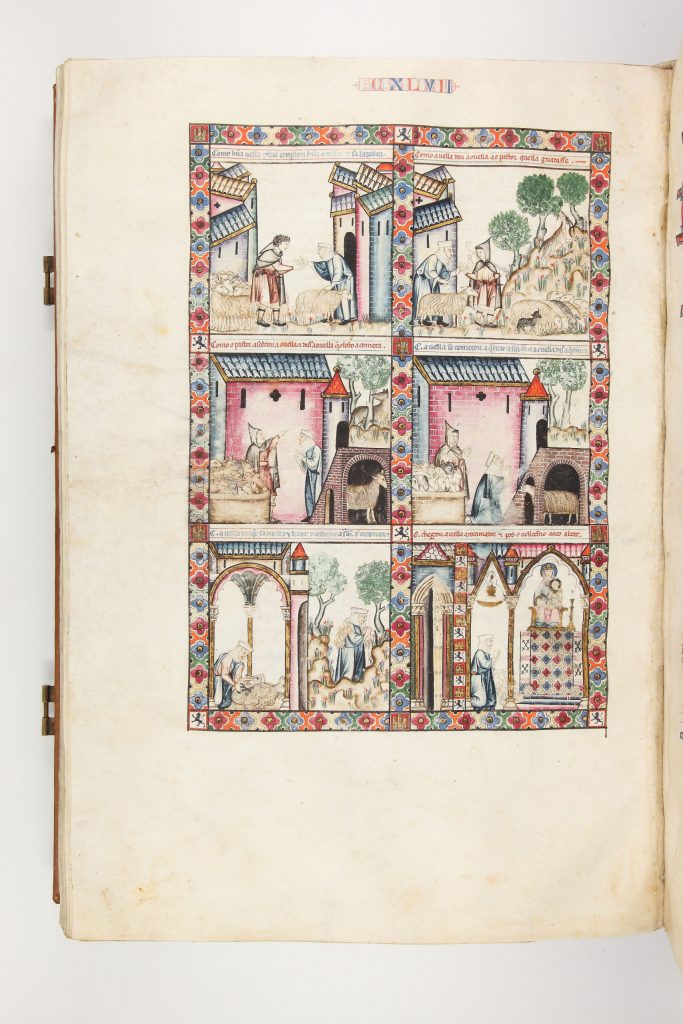
Fig. 10. Cantiga 147, T: Escorial MS T.I.1, fol. 203v.
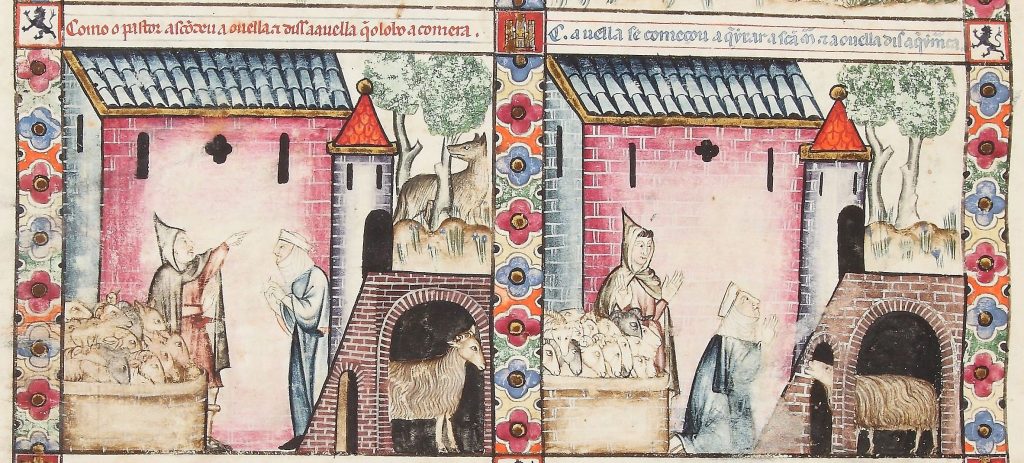
Fig. 11. Cantiga 147, T: Escorial MS T.I.1, fol. 203v (detail), panels 3 & 4.
In the miniature, the woman is shown as a formidable character, despite her advanced age and low income; with the Virgin’s help she foils the shepherd’s evil plot, shears the sheep herself (no small feat of strength), and sets off on pilgrimage to Rocamadour where she offers the fleece to the Virgin (Fig. 12).

Fig. 12. Cantiga 147, T: Escorial MS T.I.1, fol. 203v (detail), panels 5 & 6.
In Cantiga 159, a servant girl steals a chop of meat from some pilgrims to Rocamadour and hides it in a trunk (Fig. 13). When the chop reveals itself by jumping up and down, the pilgrims take it to the church, as shown in the final panel of the miniature (Fig. 14) whose caption reads: “Como colgaron a posta ant’o altar e loaron muito Sancta Maria” (“How they hung the chop before the altar and greatly praised Holy Mary”).[25]
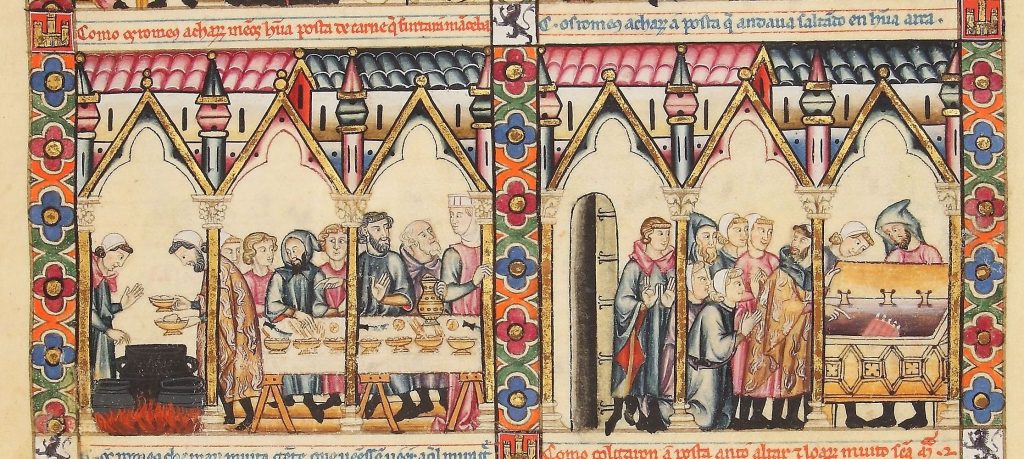
Fig. 13. Cantiga 159, T: Escorial MS T.I.1, fol. 215r (detail), panels 3 & 4.
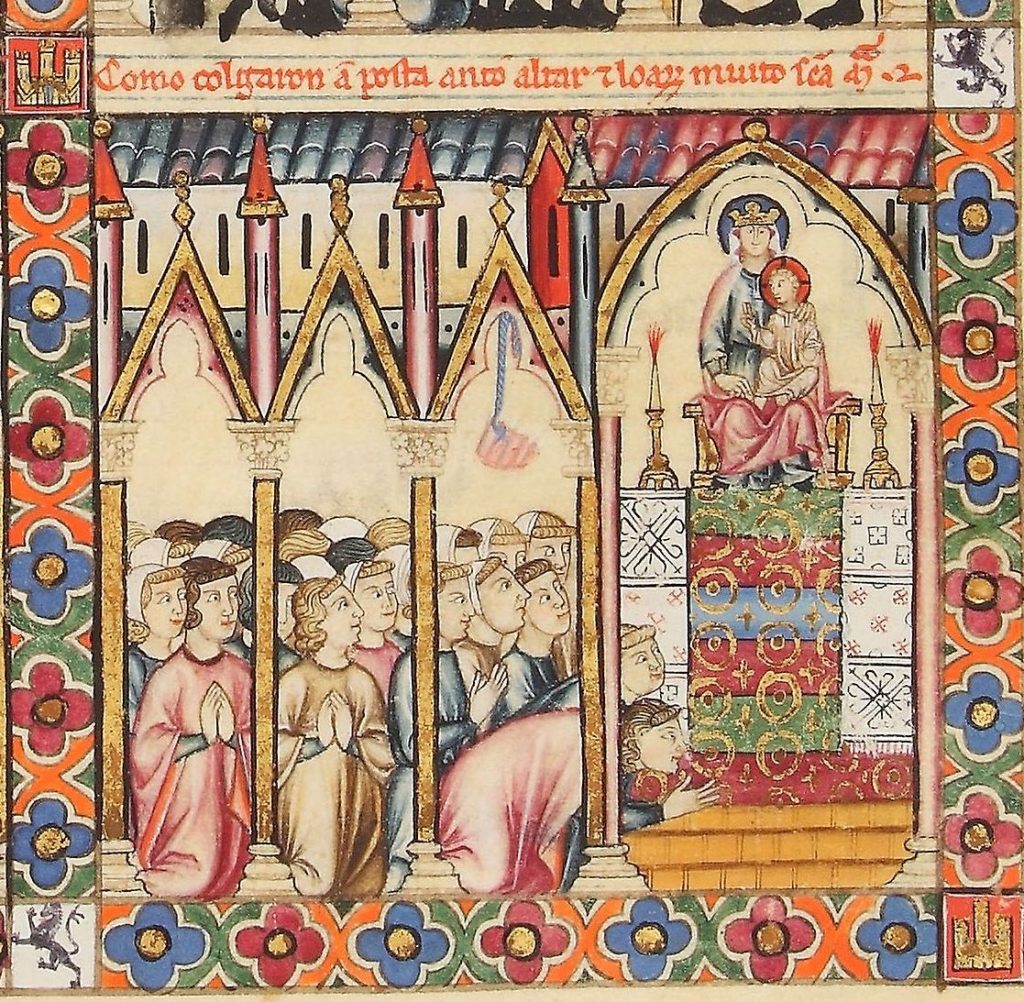
Fig. 14. Cantiga 159, T: Escorial MS T.I.1, fol. 215r (detail), panel 6.
A closely related song, Cantiga 157, describes how a landlady stole some meal from Rocamadour pilgrims who were lodging in her home. She could not resist the temptation when she saw the pilgrims making fritters from it, topped with “bon queijo rezente” (“good fresh cheese”).[26] She came to regret her action, however, when she tried to eat the fritter she had made for herself from the stolen meal, and accidently speared her mouth with the knife (Fig. 15).

Fig. 15. Cantiga 157, T: Escorial MS T.I.1, fol. 213r (detail), panels 1 and 2.
Although these miracles may strike us as amusing if not absurd, it should be recalled that medieval pilgrims were often victims of theft and fraud. A sermon entitled Veneranda dies, occurring in the Codex Calixtinus, enumerates the ways in which inn-keepers exploit and abuse pilgrims.[27] These songs also attest to the fact that women provided essential products and services for pilgrims – a lucrative line of business. In addition to offering lodging, the landlady is said to have sold items to her lodgers for which they paid a just price. Their fairmindedness is a foil for her dishonesty.
Workers Engaging in Popular Practices
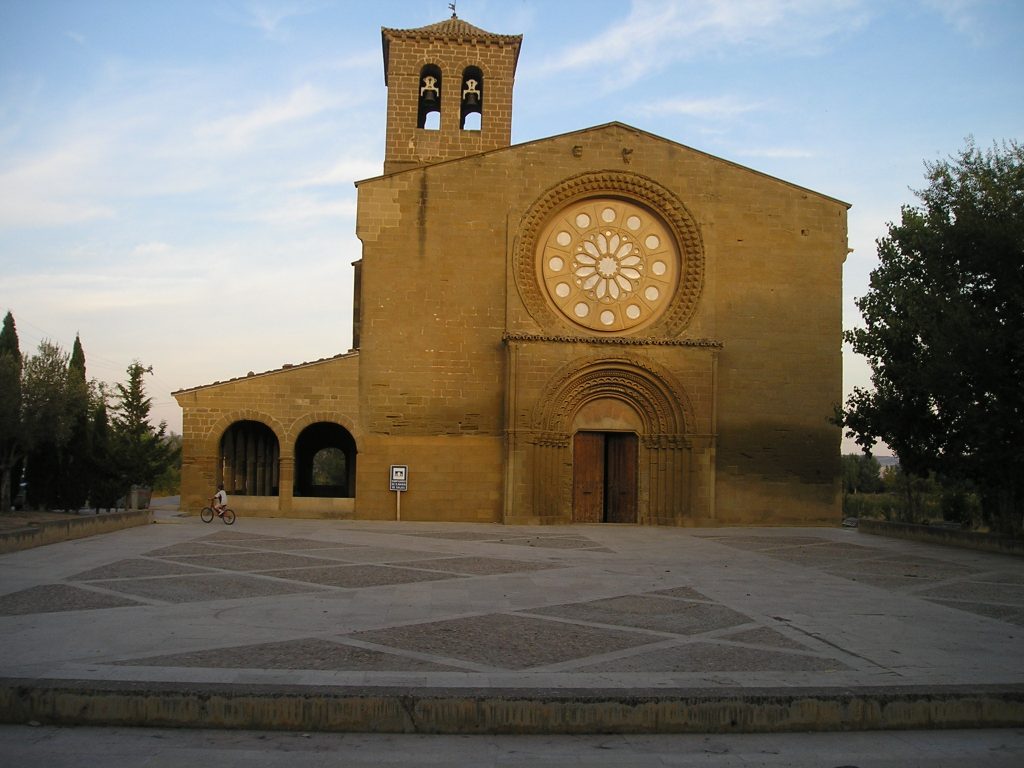
Fig. 16. The Virgin’s shrine at Salas, on the outskirts of Huesca, Aragon. https://commons.wikimedia.org/wiki/File:Nuestra_Se%C3%B1ora_de_salas_huesca.JPG
The Virgin’s shrine at Salas, on the outskirts of Huesca in Aragon, was an active center of the Virgin’s cult and twenty-two of the miracles recorded in the CSM are connected with it (Fig. 16).[28] No book of miracles connected with the shrine has been discovered, which makes the testimony of the CSM all the more valuable.[29] However, “the grouping and almost consecutive placement of the Salas miracles [in the CSM] … suggests that they entered the work in some sense as a unit,” almost certainly from a now lost libellum miraculorum.[30] Since olive groves and vineyards were prevalent in the region, it is not surprising to find that one of the miracles, Cantiga 161, concerns“un om’ assaz pobr’ ” (“a man of humble means”) from Morella, Aragon, whose only source of income was a vineyard.[31] As explained in the lyrics, “e pero grande non era, daquesta se governava / e ssa moller e seus fillos e vestia e calçava, / ca outr’ aver non avia no mundo, nen outr’ erdade” (“Although it was not large, he supported himself from it and clothed and shod his wife and children, for he had no other property or legacy in the world”).[32] Despite his limited means, he often travelled over one hundred miles to visit the shrine of the Virgin of Salas and venerate her image.[33] Wherever he went, he carried with him a badge on which the Virgin was depicted “por ser de mal guardado” (“to be safe from harm”).[34] One day in August when he was tending his vineyard, he was alarmed by a dark cloud and claps of thunder. He commended his property to the Virgin, prayed for her aid, and placed the badge in the midst of his vines. Although the surrounding vineyards were destroyed by hail, his was left untouched by the storm. Even the tendrils of vines that ran from his property into neighboring ones were left unscathed.

Fig. 17. Cantiga 161, T: Escorial MS T.I.1, fol. 217r.
The miniature shows the man making his way to Salas, praying before the altar on which a statue of the Virgin and Child is enshrined, and then, before returning home, stopping at a stall to buy a badge (Fig. 17).[35] The act of purchasing the badge is not alluded to in the song lyrics, but is an innovation of the artist who conceived the miniature – the stall and stallholder are absent from the text (Fig. 18). The only textual reference to the sale is supplied in one of the captions of the miniature, which reads: “Como conprou huna figura de Sancta Maria que trouxes sempre consigo” (“How he bought an image of Holy Mary which he always carried with him”).[36] It is clear from the miniature that the stall-holder at Salas does not deal exclusively in pilgrim badges, but has a wide variety of merchandise on offer, including belts, knife blades, scissors, combs and scrips (pilgrims’ wallets).[37] It is also obvious from his dress that he is a layman.

Fig. 18. Cantiga 161, T: Escorial MS T.I.1, fol. 217r (detail), panel 3.
In medieval Europe, both lay people and clerics were involved in the sale of souvenirs and the two interest groups clashed fiercely when clerics (the shrine-keepers) tried to impose a monopoly on the trade.[38] While a single tin-alloy badge might be purchased for a relatively small sum, and was, therefore, affordable to members of the working classes, the amount of money to be made from the sale of hundreds of such badges was considerable.[39] Medieval pilgrims purchased badges in order to prove that they had visited a shrine and to commemorate the visit, but the badges held additional attractions for them.[40] Performing a function analogous to relics, pilgrim badges were often employed as talismans to protect their owners from harm, as in this miracle.
The badge sold to the pilgrim at Salas is vesica shaped (a pointed oval format also used for seals), and it has suspensory rings attached to it.[41] Most medieval pilgrim badges had rings of this sort so they could be sewn onto hats, scrips or clothes. Held aloft by the seller and purchaser whilst the deal is transacted, the badge is larger than their hands, as is the badge shown on the table below. Evidently, the illuminator chose to depict the badge larger than life to emphasize its importance and render it readily identifiable. Despite its enlargement, it is impossible to discern the imagery on the badge as shown in this panel, and it is difficult to detect the badge in the following ones. However, the lyrics report that the badge was adorned with an image of the Virgin of Salas, seated in Majesty.[42]
By placing the badge in the middle of his property, the man welcomes Mary’s intervention. His action is a display of faith which underscores his confidence in the powers of the Virgin of Salas embodied by her shrine image.[43] The fact that the badge is a mass-produced object of little material value does not prevent it from working the miracle. Miracles were often attributed to ordinary objects on which the saints were featured, including common coins.[44] The illuminator has cleverly conveyed the miracle by showing dark clouds massing over the adjacent vineyards struck by hail, and blue sky over the man’s property, a verdant oasis, complete with realistically rendered grape vines (Fig. 19).
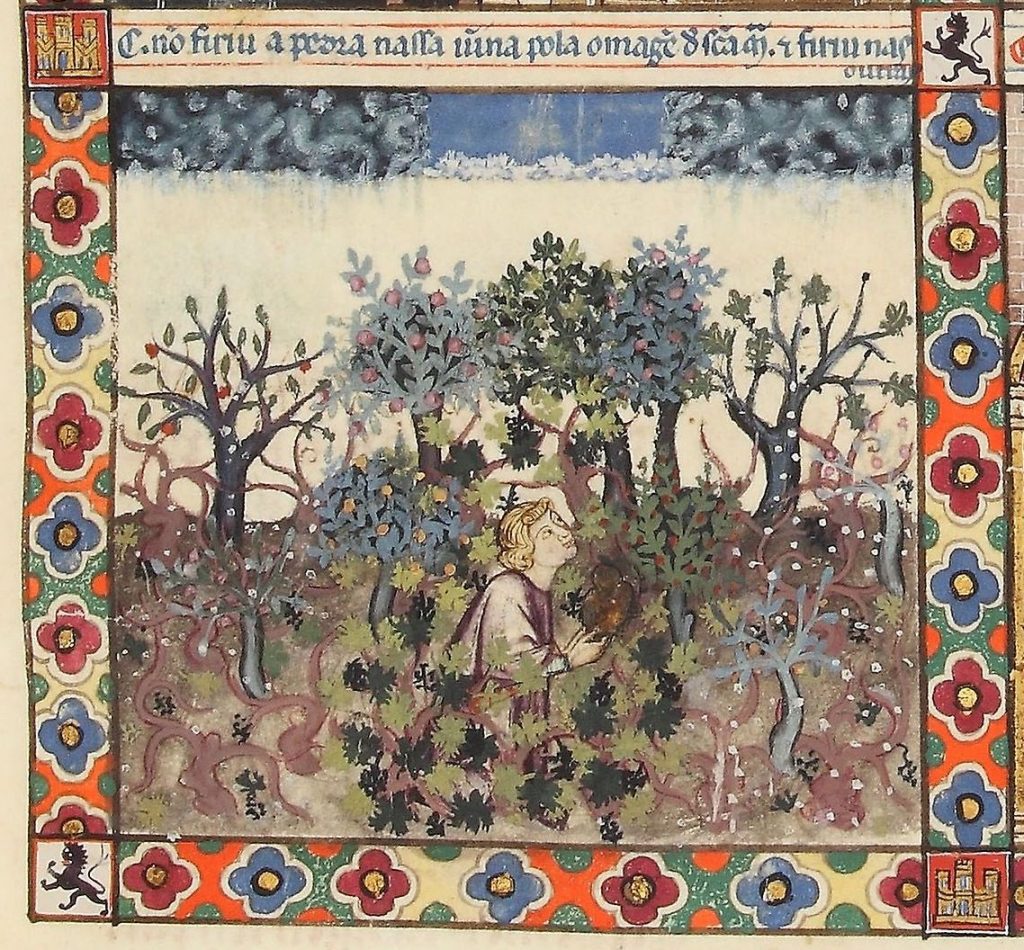
Fig. 19. Cantiga 161, T: Escorial MS T.I.1, fol. 217r (detail), panel 5.
The use of pilgrim badges to protect crops and animals was widespread in agrarian communities in the Middle Ages. Inexpensive and readily available, badges were often deposited at strategic sites on farms and estates, especially at boundaries, thresholds, and near water (e.g. wells and troughs) to safeguard resources. They were also buried in vegetable gardens and fields “to deter weeds, insect pests and vermin.”[45] Natural disasters, which threatened the food supply, were considered to be such a menace that almost any means taken to avert them were approved. In fact, in the Siete Partidas, Alfonso X’s legal code, the king even sanctions the use of “enchantments” to ward off bad weather: “Such, however, as practice enchantments or anything else with good intentions, as, for instance…to turn aside a cloud from which hail or fog is descending, that it may not injure the crops…cannot be punished, but we decree that they shall be rewarded for it.”[46]
The owner of the vineyard makes his appeal to the Virgin of Salas directly, averting the crisis on his own. In its emphasis on personal agency this miracle is typical of the CSM and characteristic of late thirteenth-century spirituality.[47] Due in part to the preaching of the mendicants, the laity began to take a more active role in their own spiritual welfare instead of looking to the clergy to intervene on their behalf. As exemplified by the vineyard miracle, the CSM reveals various facets of agrarian workers’ lives, including the use on talismans to ward off negative influences, such as bad weather. The apotropaic use of images was not, of course, restricted to a particular social class, but the reliance of workers on such measures was pervasive.
Family Dynamics
Cantiga 178, also associated with Salas, describes another widespread ritual practice — mensura — the making of candles according to the exact height or width of a given person. This cantiga also offers a nuanced portrait of the relationship between a farm boy and his parents, foregrounding the emotional lives of working people in a manner almost unparalleled in thirteenth-century sources. As explained in the song lyrics:
Ao lavrador nacera muleta, com’ aprix eu,
en ssa casa, fremosỹa, que log’a seu fillo deu,
e faagando-o muito, dizendo: “Este don teu
seja daquesta muleta, e dar-te-ll-ei org’ e palla.
A pretty little she mule was born to the farmer
in his house which he at once gave to his son.
Caressing the boy tenderly, he said:
‘Let this mule be a gift to you, and I shall give you barley and straw for it.”[48]
Delighted with the mule, the boy looked after it carefully, but one night the animal died. Not wanting his son to find out, the farmer took him to the field where he was working, while his wife, planning to sell the hide, ordered a servant to skin the beast. When the farmer and his son returned to the house, the boy saw the mule being skinned. Telling them to stop, he explained that he had vowed the mule to Holy Mary of Salas, who would surely to come to his aid. Since the mule’s hind legs had already been skinned, the mother rebuked the boy’s foolishness. He paid her no heed, however, and used his belt to measure the animal. Then he made a candle of the same length as his dead pet. When the candle had been presented, the mule sprang to life and the boy gave it some food. Everyone praised the Virgin (Fig. 20).
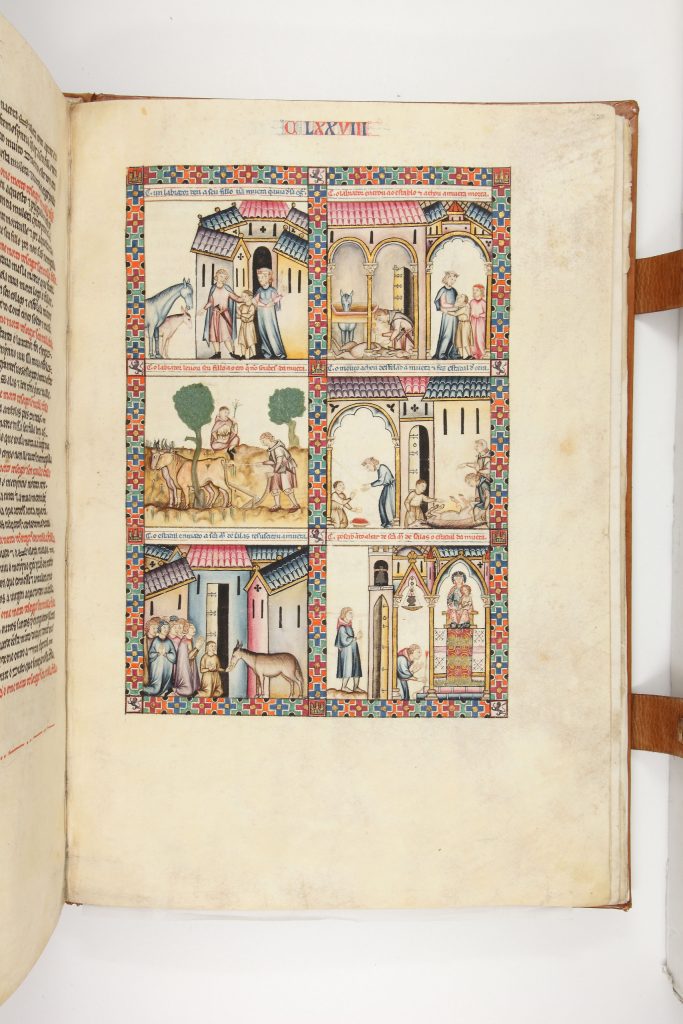
Fig. 20. Cantiga 178, T: Escorial MS T.I.1, fol. 237r.
The six-panel miniature, complete with captions, depicts the story, adding details and omitting or glossing over others. Curiously, despite its central importance to the story, the skinning of the mule is never explicitly shown. In the first panel, whose caption reads: “How a farmer gave his son a little she-mule he had from his mare”, the farmer gives the mule to his son while his wife, holding a spindle, engages in the customary task assigned to medieval women of all classes (Fig. 21). Notably, the farmer is armed with a sword, alluding to his relatively high social status and his duty to protect his holdings. The farmer’s dismay on finding the lifeless beast is conveyed in the adjacent scene: “How the farmer entered the stable and found the little mule dead”, which shows the mother embracing her son and shielding him from the sight.

Fig. 21. Cantiga 178, T: Escorial MS T.I.1, fol. 237r (detail), panels 1 & 2.
The third panel, whose caption reads: “How the farmer took his son to the field so that he would not find out about the little mule”, shows the boy watching his father plow with a team of oxen (Fig. 22). Despite the weight and encumbrance, the farmer carries out his work with his sword still strapped to his side, as if to stress his role as patriarch and protector. The caption of the fourth panel states: “How the boy found them skinning the mule and made a beeswax candle,” but apart from the hind legs of the beast, which have been stripped (a detail that is faithful to the text), it does not actually show the mule being skinned. Instead, we see the child using his belt to measure his dead pet, and then kneeling at a brazier to soften enough wax to make a candle the exact length of the beast.

Fig. 22. Cantiga 178, T: Escorial MS T.I.1, fol. 237r (detail), panels 3 & 4.
In the fifth panel: “How when the candle was sent to Holy Mary of Salas, the mule came back to life,” the little boy offers a treat to his perfectly revived pet, and in the sixth and final one: “How they put the mule’s candle before the altar of Holy Mary of Salas,” the farmer journeys to the shrine to place his son’s candle before the altar (Fig. 23).
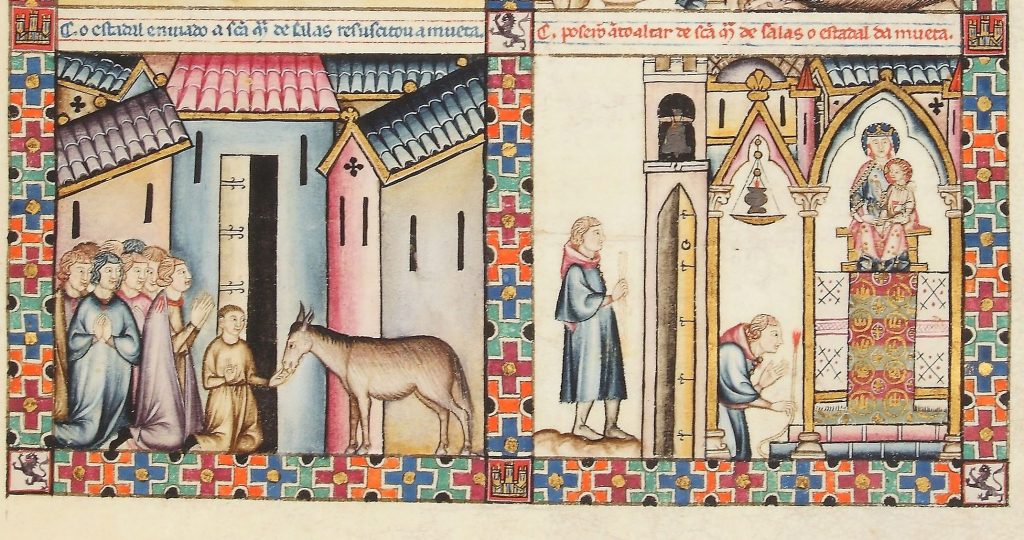
Fig. 23. Cantiga 178, T: Escorial MS T.I.1, fol. 237r (detail), panels 5 & 6.
The practice of mensura or making candles according to the exact height or width of a given person was widespread and long lived.[49] In Gregory of Tours’ sixth-century De Virtutibus S. Martini, he mentions a paralytic who, holding a candle of his own height, held vigil throughout the night at Martin’s tomb, and arose at dawn fully healed.[50] The comprehensive wardrobe accounts kept by the English Crown, record that in March of 1286 after a prolonged illness, Queen Eleanor of Castile, Alfonso X’s half-sister, had the candelarius, Alexander, make a candle for her of her own height.[51] Apparently, Eleanor had been prescribed medicines, but when these had no positive effect, she resorted to the ancient custom employed by people of various social classes.[52]
The prosperity of the family in miracle of the resurrected mule is reflected by their clothing and accoutrements, the gift of the animal to the child, the reference to the servant, the availability of beeswax from which to fashion a sizeable candle, and the means to undertake a pilgrimage. Although the miniature shows the farmer plowing his field, neither the image nor the text contributes significantly to our understanding of agricultural labor; instead the story highlights the emotional bond between a farmer and his son whose feelings he has tried to spare. The sensitive portrayal of the farmer’s son in both text and image is unusual, and heralds a more believable and naturalistic portrayal of children that was just beginning to emerge in the late thirteenth-century.[53] In the CSM, adults display affection for children and a delight in doting on them that goes beyond concern for their physical welfare. As demonstrated by this miracle, the CSM offers unparalleled evidence of social customs, religious practices and interpersonal relationships of the laboring classes.
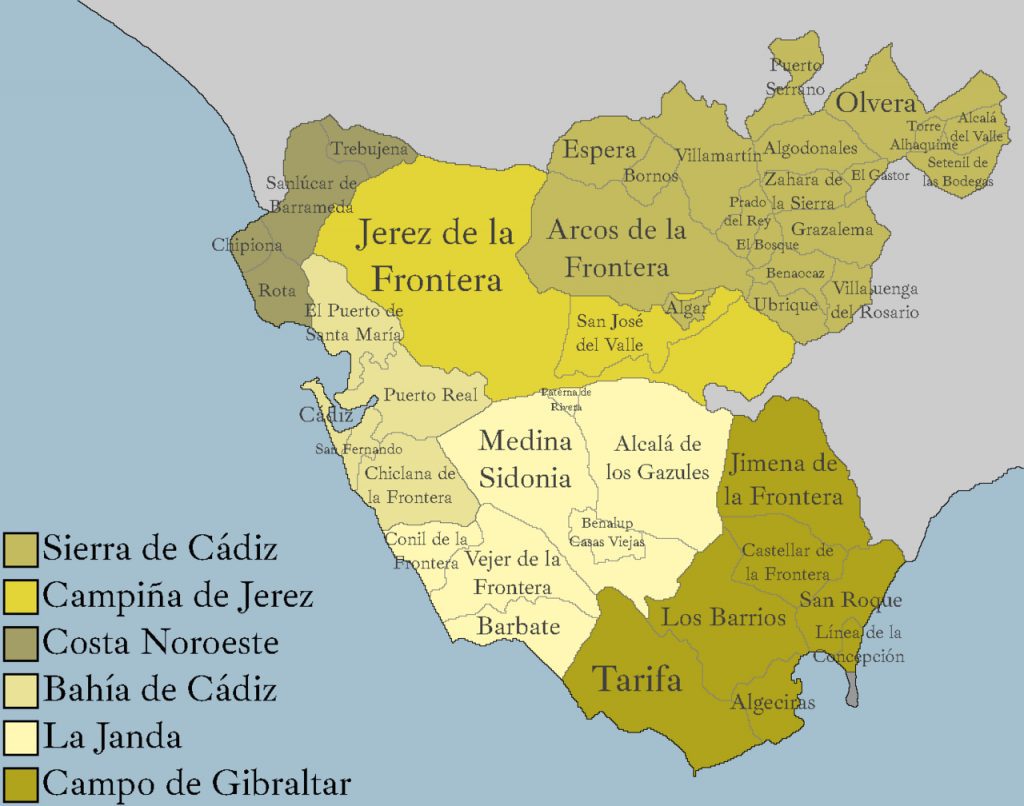
Fig. 24. Map showing Puerto de Santa María (the former Muslim town of al-Qanatir, across the bay from Cadiz). https://commons.wikimedia.org/wiki/File:Municipios_de_C%C3%A1diz.png.
The story also reminds us that modern definitions of the “working classes,” formulated in the context of the industrial revolution, do not adequately address the broad spectrum of medieval workers some of whom owned property and capital. This is particularly true of southern Spain in the thirteenth century when regions formerly under Muslim control came under the rule of the Castilian king, and land was distributed to Christian settlers and colonists. Several cantigas reference the influx of workers to Puerto de Santa María, (the former Muslim town of al-Qanatir, across the bay from Cadiz, Fig. 24). Although the songs in the Puerto cycle were added to the CSM at a late stage in its development, and were left unillustrated when the project was abandoned after Alfonso’s death, they are of particular interest because they reflect the importance assigned to workers by the king as he sought to advance his political and economic agendas.[54]
Work and Workers in Puerto de Santa María
In 1248, after the conquest of Seville, the Muslim citizens of al-Qanatir and neighbouring communities in lower Andalusia acknowledged the sovereignty of King Fernando III, Alfonso X’s father, who granted them a high degree of autonomy.[55] Around 1260, however, as Alfonso X sought to exploit the strategic port, he undermined Muslim claims to the town by establishing a naval base there, encouraging Christian settlement, and converting the mosque into a Marian church. He also made concerted efforts to ensure the town’s prosperity.[56] Articulating Alfonso X’s desire to attract builders, tradespeople, merchants to the town, the Puerto de Santa María songs are characteristic of those crafted by him and his collaborators to chronicle actual events in which they had a vested interest: conflating religion and politics, the songs are topical, replete with realistic details, and unapologetically biased.
Cantiga 371, one of the songs in the Puerto de Santa María group states explicitly that people immigrated to the town to find work and increase their wealth:
Muitas gentes y viinnan a aquel logar enton,
os ũus en romaria, avend’ i gran devoçon,
os outros pera pobrarem e por averen quinnon
das herdades que partissem, segundo podess’ aver ….
Outros viinnam per lavraren e gãar y seu jornal
que lles davan por britaren pedra ou por fazer cal
ou por lavrar na ygreja da Sennor espirital;
e poren de muitas partes viinnam y guareçer.
Many people were coming there at that time,
some on pilgrimages, having great devotion for the place,
others to settle and acquire a portion
of the estates they were dividing, according to what was allotted to them ….
Others came to work and earn their daily wage
which they gave them for breaking stone or making mortar
or working on the church of the Spiritual Lady [i.e. the Virgin Mary].
Therefore, they came from many places to improve their lot.[57]
Cantiga 328 explains that “a Moorish constable” (alguazil) from Jerez gave the town to Alfonso X along with several other villages on the Atlantic seaboard, and that the Virgin Mary insisted that the place be renamed in her honor, while Cantiga 379 records that Alfonso X sent out a call for merchants to establish bases there, promising them favorable terms and protections. The song in which this is stated, explains how the Virgin took revenge on Catalan pirates after they attacked Muslim merchants who had travelled by sea to the town at Alfonso X’s urging. In fact, Alfonso X granted substantial rights and privileges to settlers, both Iberian and foreign born, as corroborated by the charter of settlement the king granted on 16 December 1281, in which he guaranteed safe passage to merchants and exemptions from tolls and duties.[58] That Alfonso X wanted to establish an international hub for trade is clear because the privileges cover “Castilians, Leonese, Portuguese, and men of Bayonne and the dominions of the kings of France, England, and Aragón, men of Marseille and the dominions of Charles of Anjou, the king of Naples and Sicily (1266-1285), the Genoese, Pisans, Venetians, and of all other lands.”[59] Alfonso X also stipulated that two annual fairs of two weeks duration should be held in Puerto de Santa María.[60]
The Virgin’s ability to protect her “colonists” is underscored in Cantiga 398, a song about Don Domingo and his wife doña Sancha, among the earliest settlers to Puerto de Santa María, who lost thirty lambs from their flock after moving there. The song lyrics, which explain that Sancha prayed to the Virgin for the flock’s safety as her husband searched for them, convey the grave concern of the working couple over the potential loss of their livelihood. As the search over rough terrain is prolonged, their distress is palpable:
… e per vales e outeyros
os andou tod’aquel dia busca[n]do, o mui coitado.
Enquanto os el buscava con mui gran coita sobeja,
a ssa moller, Dona Sancha, foi chorand’ aa ygreja
e diss’: “Ay, Santa Maria, pela ta merçee seja
que aquel gãado aja de lobos per ti guardado.”
E seu marido, con coita de os anchar, non quedava
de busca-los pelos montes, e pero nonos achava;
mais depois a tercer dia viu o gãad’ u estava
de consũu, e de lobos tod’en derredor çercado.
E do pesar que ouvea grand[e] ouv’ enton conorto,
e foi fillar seu gãado e levó-o ao Porto.
que nunca daqueles lobos un dos cordeiros foi morto;
ca o Bõo Pastor tiinna a ssa Madre por cayado.
…he [Domingo] wandered over valleys and hills
all that day looking for them [the lambs] anxiously.
While he was looking for them in great distress,
his wife dona Sancha, went weeping to the church
and said, “Oh, Holy Mary, by your mercy,
may those sheep be protected by you from wolves.
Her husband, eager to find them,
did not cease to look for them in the mountains,
although he did not find them.
However, after the third day he saw the sheep gathered together,
surrounded on all sides by wolves.
He was then relieved of the great grief he had suffered
and went to gather his flock and take it to the Port [Puerto de Santa María].
Not even one of the lambs was killed by those wolves,
for the Good Shepherd had His Mother as His Staff.[61]
Like most miracle stories, this one has a happy ending, albeit with an unexpected twist: the predatory wolves become the lambs’ protectors when the Virgin sends them to guard the flock.
Three songs are dedicated to the builders of the Virgin’s church on the site of the mosque (Fig. 25), a project begun by Alfonso X in 1260, during which parts of the mosque, including the qibla (wall facing Mecca) were preserved (Fig. 26). The first, Cantiga 358, tells how the Virgin provided the Muslim foreman, Ali, with a buried cache of dressed stone blocks, presumably vestiges of an earlier building. The lyrics explain the builders were under orders of “don Alfonso” and that although they “worked fifty full days and carried many stones to make the foundation” (“lavravam cada dia ben quinnentos / e tragiam muitas pedras pera fazer fundamentos”) they had run out of appropriate material.[62] The second song, Cantiga 356, records how the workmen were supplied with wood when a bridge, torn from its moorings in a storm, was carried to the building site. The master builder had promised Alfonso X to complete the construction by a certain date, but without the Virgin’s aid, this would have proved impossible. The third song, Cantiga 364, records the rescue of thirty workmen when a tower collapsed on top of them as they were digging a deep trench “por gaannar seus dinneiros” (“to earn their wages”).[63]
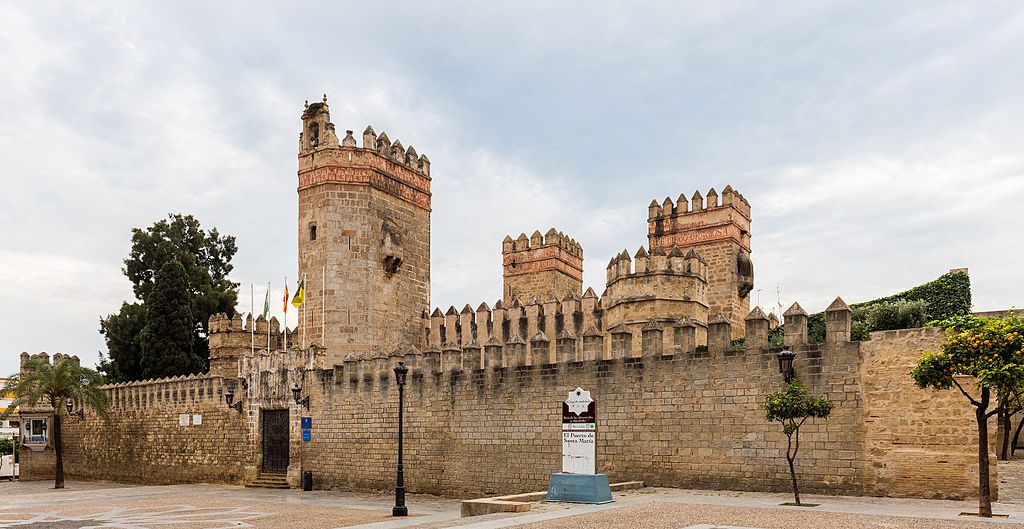
Fig. 25. Alfonso X’s fortified church dedicated to the Virgin Mary, Puerto de Santa María (Cádiz). https://en.wikipedia.org/.
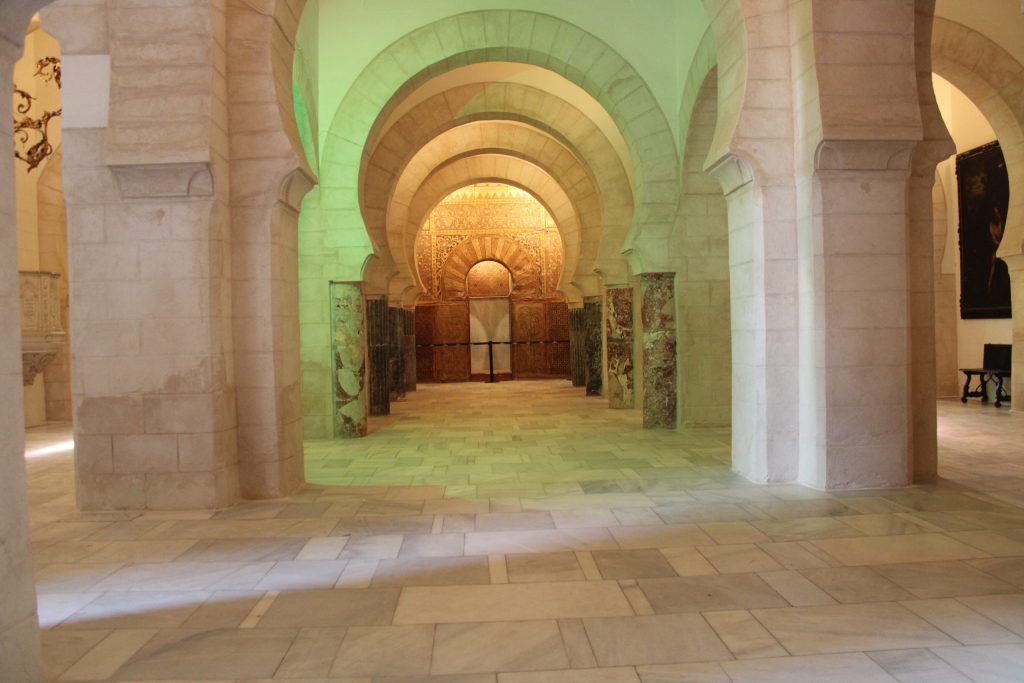
Fig. 26. Alfonso X’s church built on the site of a mosque and preserving aspects of it, including the qibla Puerto de Santa María (Cádiz).
The unusual nature of these compositions cannot be overstated; although church construction is the subject of some traditional miracle tales, work deadlines, material shortages and wages are not typical subjects of medieval song. It is remarkable that the myriad problems associated with the project were commemorated in rhyming verse and set to music by none other than its royal patron. When performed in Alfonso’s day, these songs would have been charged with meaning derived from their contemporary context. The explicit association between the CSM and the construction of the Virgin’s church in the newly christened town of Puerto de Santa María reminds us that the making of the CSM was one of a constellation of activities in honor of the Virgin Mary supervised and subsidized by Alfonso X, her self-appointed troubadour and champion.[64] When the king is shown in the CSM exhorting his companions to praise the Virgin, the groups he addresses are aristocratic males — royals, nobles and high ranking churchmen (Fig. 27), but the overall message presented in the work is of an ideal society, encompassing all social estates, including the working classes.

Fig. 27. Cantiga 70, T: Escorial MS T.I.1, fol. 104r, panels 1 & 2.
The Ideal Society
With protagonists from a range of socioeconomic, ethnic and religious backgrounds, the CSM advertises a harmonious social order. In both text and image Alfonso X is presented as a unifying force, drawing together his disparate subjects and interceding on their behalf. Cantiga 409 in particular, a song of praise left unillustrated, seems to reflect Alfonso’s desire to present an idealistic image of a cohesive and stable society, joining people of all social classes through collective devotion to the Virgin. In this song, a range of individuals are encouraged to laud the Virgin with singing and dancing, including kings and emperors, preachers, monks and nuns, knights and honored ladies, damsels and squires, artisans, and common folk, and merchants and workmen. As argued by Manuel Pedro Ferreira, “in Alfonso’s imagination the CSM could reach the highest and lowest members of Castilian society, in some instances serving as a catalyst to the mingling of classes that medieval society tended to keep apart.”[65] The popular form of the miracle songs mirrors Alfonso’s aim to achieve a stable society in which each person, regardless of high or low estate, plays an integral part and performs “functions essential to the well-being of the whole.”[66]
The English philosopher, John of Salisbury (1115/20 –1180), used the image of the human body to describe an ideal society, a metaphor that was often repeated and occurs in the legislative works commissioned by Alfonso X. In the latter, the king is described as the head and soul of the body, which is composed of distinct yet interdependent members, an image that parallels the social order presented in the CSM. “As the soul gives life to the human body and the head directs its activities, so the king commands the body politic, unifying it under his leadership.”[67] The king is the bond uniting his people; “a wall protecting them; the sustainer of lesser folk, lest they perish; the suppressor of the mighty, lest they become proud; the animator of the downtrodden, lest they lose heart; and a curb on evildoers. As the feelings that stir the body originate in the head, so too the people should be guided by his commands.”[68]
The CSM not only expresses Alfonso X’s devotion to the Virgin, but also his dynastic pride, his dreams and fears, successes and failures and political aspirations, especially his desire to consolidate in one stable polity his disparate kingdoms, particularly newly conquered southern territories. Workers were, of course, vital to this enterprise. Encompassing members of all social classes, the songs show the Virgin at work alongside Alfonso X to bring social cohesion and peace at frequent moments of political instability, flux and crisis that characterized his reign.
References
| ↑1 | T: El Escorial, Real Monasterio de San Lorenzo MS T.I.1, fol. 5r. For recent analysis of this prefatory image, see Kirsten Kennedy, Alfonso X of Castile-León. Royal Patronage, Self-Promotion and Manuscripts in Thirteenth-Century Spain, Amsterdam, 2019, pp. 120–24, and Laura Fernández Fernández, ‘“Este livro, com’ achei, fez a onr’ e a loor da Virgen Santa Maria.” El proyecto de las Cantigas de Santa Maria en el marco del escritorio regio. Estado de la cuestión y nuevas reflexiones’, in Alfonso X, Las Cantigas de Santa Maria. Códice Rico, MS T-I-1, Real Biblioteca Monasterio de El Escorial, eds Laura Fernández Fernández and Juan Carlos Ruiz Souza, Madrid, 2011, vol. 2, 55–60. |
|---|---|
| ↑2 | Joseph T. Snow, “Clues to the authorship of the Cantigas de Santa Maria from the Toledo Manuscript,” Romance Quarterly 66/3 (2019), 135-146, esp. 140. Scholarly opinion has changed since the nineteenth century when many scholars claimed that Alfonso wrote the CSM singlehandedly. See Joseph T. Snow, “Clues to the authorship,” 136. Although this assertion has been discredited, the precise extent of the king’s involvement in the project is still the subject of scholarly debate. However, the debate concerning authorship should not eclipse the simple fact that Alfonso X presents himself in the work as its author, and this is clearly what he would have us believe. https://doi.org/10.1080/08831157.2019.1637216 |
| ↑3 | John Esten Keller and Annette Grant Cash, Daily Life Depicted in the Cantigas de Santa Maria, Studies in Romance Languages, 44 (Lexington, KY: University Press of Kentucky, 1998), 3. |
| ↑4 | George D. Greenia, “The Politics of Piety: Manuscript Illumination and Narration in the Cantigas de Santa Maria,” Hispanic Review 61 (1993), 325-344 at 329. https://doi.org/10.2307/475069 |
| ↑5 | To: Madrid, Biblioteca Nacional de España MS 10069 (formerly in the Library of Toledo Cathedral); E: El Escorial, Real Monasterio de San Lorenzo MS b-I-2; T: El Escorial, Real Monasterio de San Lorenzo MS T-I-1 and F: Florence, Biblioteca Nazionale Centrale Banco Rari, 20. For the evolution of the project and relationship between the MSS, see Martha E. Schaffer, “Los códices de las Cantigas de Santa Maria: su problemática,” in El scriptorium alfonsí: de los Libros de Astrologia a las Cantigas de Santa Maria, ed. Jesús Montoya Martínez and Ana Domínguez Rodríguez (Madrid: Editorial Complutense, 1999), 127-148; Martha E. Schaffer, “The ‘evolution’ of the Cantigas de Santa Maria: the relationships between manuscripts T, F, and E,” in Cobras e Son. Papers on the Text, Music, and Manuscripts of the Cantigas de Santa Maria, ed. Stephen Parkinson (Oxford: Legenda, 2000), 186-213; Manuel Pedro Ferreira, “The Stemma of the Marian Cantigas: Philological and Musical Evidence,” Bulletin of the Cantigueiros de Santa Maria 6 (1994), 58-98; and Stephen Parkinson and Deirdre Jackson, “Collection, Composition, and Compilation in the Cantigas de Santa Maria,” Portuguese Studies, 22 (2006), 159–72. https://doi.org/10.1353/port.2006.0013 |
| ↑6 | For comprehensive information on each song, and the CSM in general, see the Oxford Cantigas de Santa Maria: http://csm.mml.ox.ac.uk. Under the directorship of Stephen Parkinson, the database was launched in 2005 as the first project of the Centre for the Study of the Cantigas de Santa Maria. Key work on the database was undertaken by Deirdre Jackson (Leverhulme Trust Research Assistant 2003-2005, MHRA Research Associate 2005-2006), Alison Campbell and Roberto Ceolin (Research Assistants 2005-2006). David Barnett (British Academy and Leverhulme Trust Research Assistant 2013-2017) was responsible for further work on sources and on the critical edition. |
| ↑7 | Stephen Parkinson, “Supporting research with poetic metadata: the Oxford Cantigas de Santa Maria database,” Revista de poética medieval 33(2019), 77-86 at 79. https://doi.org/10.37536/RPM.2019.33.0.72276 |
| ↑8 | On the provenance of the manuscripts, see Laura Fernández Fernández, “Cantigas de Santa María: fortuna de sus manuscritos,” Alcanate: Revista de estudios alfonsíes 6 (2008-2009), 323-48. |
| ↑9 | José Guerrero Lovillo, Las Cántigas. Estudio arqueológico de sus miniaturas (Madrid: C.S.I.C., 1949); Gonzalo Menéndez Pidal, La España del siglo XIII leída en imágenes (Madrid:Real academia de la Historia, 1986); Keller and Cash, Daily Life Depicted. |
| ↑10 | E.g. Ana Domínguez Rodríguez, “El arte de la construcción y otras técnicas artísticas en la miniatura de Alfonso X el Sabio,” Alcanate 1 (1998-99), 59-77. |
| ↑11 | Cantigas concerning Alfonso X and his family are listed in Evelyn S. Procter, Alfonso X, Patron of Literature and Learning (Oxford: Clarendon Press , 1951), 32-33 and have been discussed by Joseph F. O’Callaghan, Alfonso X and the Cantigas de Santa Maria: A Poetic Biography, The Medieval Mediterranean 16 (Leiden: Brill, 1998). |
| ↑12 | On sources, see Adolf Mussafia, “Studien zu den mittelalterlichen Marienlegenden,” Sitzungsberichte der kaiserl. Akademie der Wissenschaften in Wien, philosophisch-historische Classe 113 (1886), 917-94; 115 (1888), 5-92; 119, no.9 (1889), 1-66; 123, no.8 (1891), 1-85 and 139, no. 8 (1898), 1-74; Elise Dexter, “Sources of the Cantigas of Alfonso el Sabio,” PhD thesis, University of Wisconsin, Madison, 1926 and Paule V. Bétérous, Les collections des Miracles de la Vierge en Gallo et Ibéro-Roman au XIIIe Siècle, Marian Library Series, New Series, Vols. 15-16 (Dayton, OH: University of Dayton, 1983-1984). Stephen Parkinson and Deirdre Jackson, “Putting the Cantigas in Context: Tracing the Sources of Alfonso X’s Cantigas de Santa Maria”, paper presented at the Kalamazoo Medieval Congress 2005, available online http://users.ox.ac.uk/srp/zoo5.pdf, and Parkinson and Jackson, “Collection, Composition, and Compilation,”159–72. See also Stephen Parkinson, “Alfonso X, Miracle Collector,” in Alfonso X, Las Cantigas de Santa Maria. Códice Rico, MS T-I-1, Real Biblioteca Monasterio de El Escorial, ed. Laura Fernández Fernández and Juan Carlos Ruiz Souza (Madrid: Patrimonio Nacional & Testimonio Compañía Editorial, 2011), II, 79-105. |
| ↑13 | Alfonso X el Sabio, Cantigas de Santa María, ed. Walter Mettmann, 3 vols, Clásicos Castalia, 134, 172 and 178 (Madrid: Castalia, 1986-1989), II, 267, lines 13-14. Kathleen Kulp-Hill, Songs of Holy Mary of Alfonso X, the Wise: A Translation of the Cantigas de Santa María (Tempe, AZ: Arizona Center for Medieval Studies, 2000), 255. |
| ↑14 | Mettmann, III, 25, lines 20-23. Kathleen Kulp-Hill, Songs of Holy Mary, 324. This cantiga is repeated as 373. The merchant is shown offering a gift to the Virgin in the first panel of the unfinished miniature (MS F, fol. 71r). |
| ↑15 | Mettmann, I, 105, lines 14-15. Kulp-Hill, Songs, 27. See John Esten Keller, “The Miracle of the Divinely-Inspired Silkworms: Cantiga 18 of the Cantigas de Santa Maria,” Hispanófila 82 (1984), 1-9. |
| ↑16 | Mettmann, I, 107, lines 85-87. Kulp-Hill, Songs, 27. |
| ↑17 | For text-image relationships, see María Victoria Chico Picaza, “La relación texto-imagen en las Cantigas de Santa María, de Alfonso el Sabio”, Reales Sitios 87 (1986), 65-72; Parkinson and Jackson, “Putting the Cantigas in Context: Tracing the Sources of Alfonso X’s Cantigas de Santa Maria”, paper presented at the Kalamazoo Medieval Congress 2005, available online http://users.ox.ac.uk/srp/zoo5.pdf; and Rocío Sánchez Ameijeiras, Los rostros de las palabras. Imágenes y teoría literaria en el Occidente medieval (Madrid, Akal, 2014), esp. chapters 7 and 8. |
| ↑18 | The Castilian prosifications of CSM 2–25 in T are transcribed by Jose Filgueira Valverde, “El texto,” in El “Códice Rico” de las Cantigas de Alfonso X, el Sabio (Madrid: Edilán, 1979), II, 65-99, and reproduced in Mettmann, I, 313–44. See also Annette Grant Cash and James C. Murray, Cantigas de Santa María: 2-25 of the Escorial Manuscript T.I.1, Códice Rico: Miniatures, Translations of the Old Spanish Prose Marginalia and Commentary (Newark, Delaware: Juan de la Cuesta Hispanic Monographs, 2017). |
| ↑19 | John Feltwell, The Story of Silk (Phoenix Mill: Alan Sutton, 1990), 42 and 46. |
| ↑20 | Feltwell, Story of Silk, 38. |
| ↑21 | Benedicta Ward, Miracles and the Medieval Mind: Theory, Record and Event (London, 1982), 132-133. |
| ↑22 | For the representation and function of images of the Virgin Mary in the CSM, see Deirdre Jackson, “Saint and Simulacra: Images of the Virgin in the Cantigas de Santa María of Alfonso X of Castile (1252-1284),” unpublished PhD thesis, The Courtauld Institute of Art, University of London, 2002. |
| ↑23 | Cebrià Baraut i Obiols, “Un recull de miracles de Santa Maria, procedent de Ripoll, i les Cantigues d’Alfons el Savi,” in Maria Ecclesia, Regina et Mirabilis, Scripta et Documenta, VI, ed. Estanislao M. Llopart, (Montserrat: Abadia de Montserrat, 1956), 127-60. |
| ↑24 | Mettmann, II, 131, lines 16-18. Kulp-Hill, Songs, 181. |
| ↑25 | Guerrero Lovillo, Las Cántigas, 411. Kathleen Kulp-Hill, “The Captions to the Miniatures of the ‘Codice Rico’ of the Cantigas de Santa Maria, a Translation,” Bulletin of the Cantigueiros de Santa Maria 7 (1995), 3-64 at 54. |
| ↑26 | Mettmann, II, 151, line 13. Kulp-Hill, Songs, 192. Cantigas 159 and 157, two similar songs, were inspired by Rocamadour miracles recorded in a manuscript at Ripoll. MS Rivipullensis 193; no. 16: De septem peregrinis (fols 45ᵛ–46) and no. 18: De feminaque non fideliter tenuit comissa (fol. 46–46ᵛ). Baraut i Obiols, “Un recull de miracles de Santa Maria”, 157–58. As Stephen Parkinson notes, only the story about the dishonest landlady “is represented in the larger Rocamadour MSS.” The Rocamadour text gives no details of what food the woman makes with the flour, while the Ripoll Latin text has her imitate them and use flour and fat to make some cremola (also referred to as crema and cremina) in a pan. The CSM narrative converts this into the more familiar fillós [fritters].” Stephen Parkinson, “The Miracles Came in Two by Two: Paired Narratives in the Cantigas de Santa Maria,” in Gaude Virgo Gloriosa: Marian Miracle Literature in the Iberian Peninsula And France in the Middle Ages, ed. Juan-Carlos Conde and Emma Gatland (London: Queen Mary, University of London, 2011), 67, n. 4. |
| ↑27 | Annie Shaver-Crandell, Paula Gerson and Alison Stones, The Pilgrim’s Guide to Santiago de Compostela: A Gazetteer (London, 1995), 23. See also Juan Carlos Galeano, “Agresión y violencia contra los peregrinos en las Cantigas de Santa Maria,” Bulletin of the Cantigueiros de Santa Maria 9 (1997), 23-34. |
| ↑28 | The shrine of the Virgin of Salas in Huesca (Aragón) was established c. 1200 on the initiative of Queen of Aragón, doña Sancha of Castile, wife of Alfonso II. Cantigas 43, 44, 109, 114, 118, 129, 161, 163, 164, 166, 167, 168, 171, 172, 173, 176, 177, 178, 179, 189, 247, and 408 concern the Virgin of Salas. See Pedro Aguado Bleye, Santa María de Salas en el siglo XIII: Estudio sobre algunas cantigas de Alfonso el Sabio (Bilbao: Garmendía , 1916) and Theodore L. Kassier, “The ‘Salas’ Miracles of the Cantigas de Santa María: Folklore and Social Reality,” Bulletin of the Cantigueiros de Santa Maria 3 (1990), 31-38. |
| ↑29 | Bleye, Santa María de Salas, 6. |
| ↑30 | Kassier, “The ‘Salas’ Miracles of the Cantigas de Santa María, 36. |
| ↑31 | Mettmann, II, 157, line 7. Kulp-Hill, Songs, 196. |
| ↑32 | Cantiga 161. Mettmann, II, 157, lines 13-15. Kulp-Hill, Songs, 196. |
| ↑33 | The wooden statue of the Virgin, which can still be seen there today, was likely the one venerated by pilgrims in the thirteenth century. |
| ↑34 | Mettmann, II, 157, line 9. Kulp-Hill, Songs, 196. |
| ↑35 | In Cantiga 161, line 9, this object is described as a “sinal,” (lit. sign or emblem). In the Middle Ages, the Latin term “signum” (sign) was commonly applied to pilgrim badges. A badge could also be called a “sigillum” (seal). Brian Spencer, Pilgrim Souvenirs and Secular Badges (London: The Stationery Office, 1998), 133. Menéndez Pidal locates the store at which the pilgrim buys his badge in Morella, but surely it is at the shrine in Salas. Gonzalo Menéndez Pidal, La España del siglo XIII leída en imágenes (Madrid: Real Academia de la Historia, 1986), 198. |
| ↑36 | Guerrero Lovillo, Cantigas, 412. Kulp-Hill, “Captions,” 54. |
| ↑37 | The items on sale are itemized by Menéndez Pidal, La España, 198. |
| ↑38 | On disputes over the trade in France see E. Cohen, “In haec signa: Pilgrim badge trade in Southern France,” Journal of Medieval History 2 (1976), 193-214. https://doi.org/10.1016/0304-4181(76)90020-8 |
| ↑39 | In 1199, Pope Innocent III, recognizing this fact, granted the canons of St Peter’s the exclusive right to manufacture and market badges bearing the images of Sts Peter and Paul. Previously, the Pope himself accrued the profits from the business. Die Register Innocenz’ III, ed. O. Hageneder, I, n. 534, 772-773, cited by Diana Webb, Pilgrims and Pilgrimage in the Medieval West (London: Bloomsbury Academic, 1999), 129. |
| ↑40 | For a survey of the literature on medieval pilgrim badges consult A.M. Koldeweij, “Lifting the Veil on Pilgrim Badges,” in Pilgrimage Explored, ed. J. Stopford (York: York Medieval Press/The Boydell Press, 1999), 161-188. See also Alessandra Rodolfo, “Signa Super Vestes,” in Romei e Giubilei: Il pellegrinaggio medievale a San Pietro, ed. Mario D’Onofrio (Milan: Electa, 1999), 151-156 and Webb, Pilgrims and Pilgrimage, 124-132. |
| ↑41 | Vesica shaped badges were produced at Rocamadour from the second half of the twelfth century and inspired the production of similarly-shaped badges at other French shrines dedicated to the Virgin. The same oval format was also adopted for badges produced in the Spanish kingdoms, for example, thirteenth-century badges from Santo Domingo de la Calzada and Villa Sirga. Brian Spencer, Pilgrim Souvenirs, 234. These are also discussed briefly in Denis Bruna, “Enseignes de pèlerinage et identité du pèlerin,” Les Cahiers de Saint-Michel de Cuxa 31 (2000), 59-63. |
| ↑42 | Mettmann, II, 157, line 10. Kulp-Hill, Songs, 196. The vesica shaped seal of the Bishop of Huesca and advisor to James I of Aragon, don Jaime de Roca, bore an image of the Virgin of Salas and the inscription: “Sancta María de Salis, ora pro me.” The iconography of the bishop’s seal can be explained by the fact that he served as both Bishop of Huesca and as Prior of Santa María of Salas. Until 1252, the shrine at Salas had been administered by the monks of the Benedictine Abbey of San Pedro el Viejo de Huesca, but it was then placed in the care of the Bishop and Cathedral Chapter. Aguado Bleye, 11. See also Benito Fuentes Isla, “La imagen de la Virgen de los sellos,” Revista de Archivos, Bibliotecas y Museos 26 (1922), nos. 10, 11, 12, 495-526 at 519. |
| ↑43 | For the theoretical framework see Rocío Sánchez Ameijeiras, “Imaxes e Teoría da Imaxe nas Cantigas de Santa Maria” in As Cantigas de Santa Maria, ed. Elvira Fidalgo (Vigo: Xerais de Galicia, 2002), 245-330; and “Como a Virgen Santa paresceu, paresçía: las empresas marianas alfonsies y la teoría neoplatónica de la imagen sagrada” in Alfonso X el sabio, ed. Isidro Bango Torviso y Teresa López de Guereño (Murcia: Novograf 2009), 357-365. |
| ↑44 | Richard C.Trexler, Public Life in Renaissance Florence (Ithaca: Cornell University Press, 1991), 63. https://doi.org/10.7591/9781501720277 |
| ↑45 | Spencer, Pilgrim Souvenirs, 18. See also Stephen Wilson, The Magical Universe: Everyday Ritual and Magic in Pre-Modern Europe (London: Hambledon and London, 2000), 21. |
| ↑46 | Alfonso X, el Sabio, Siete Partidas, Partida 7, Title 23, Law 3, trans. Samuel Parsons Scott (Chicago: Commerce Clearing House, 1931), 1432. Scott’s translation, reprinted as Alfonso X, Las Siete Partidas, ed. Robert I. Burns (Philadelphia: University of Pennsylvania Press, 2001), is based on the edition of Ignacio Sanponts y Barba, Ramón Martí de Eixalá, and José Ferrer y Subirana, Las “Siete Partidas” del sabio rey don Alfonso el IX [=X], 4 vols. (Barcelona: A. Bergnes, 1843-44). For the Castilian, see Las Siete Partidas del rey Don Alfonso el Sabio, ed. Real Academia de la Historia, 3 vols. (Madrid: Imprenta Real, 1807; rpt. Madrid: Atlas, 1972). On magic and enchantments in visual culture, see Alejandro García Avilés, “La cultura visual de la magia en la época de Alfonso X,” Alcanate 5 (2006-2007), 49-87; and Alejandro García Avilés, Imágenes encantadas: los poderes de la imagen en la Edad Media (Barcelona: Sans Soleil Ediciones, 2021). |
| ↑47 | See André Vauchez, “Lay People’s Sanctity in Western Europe: Evolution of a Pattern (Twelfth and Thirteenth Centuries),” in Images of Sainthood in Medieval Europe, eds. Renate Blumenfeld-Kosinski and Timea Szell (Ithaca: Cornell University Press, 1991), 21-32. https://doi.org/10.7591/9781501745508-003 |
| ↑48 | Mettmann, II, 190, lines 11-14. Kulp-Hill, Songs, 214. |
| ↑49 | Eamon Duffy, The Stripping of the Altars: Traditional Religion in England c.1400-c.1580 (New Haven: Yale University Press, 1992), 184. Wilson also discusses mensura. Stephen Wilson, The Magical Universe: Everyday Ritual and Magic in Pre-Modern Europe (London: Hambledon and London, 2000), 330. Joanna Cannon provides an account of nonliturgical rites carried out at the shrine of Margherita of Cortona (d.1297). These include the offering of candles made to a person’s measure and of long wax tapers used to encircle (cingere) the entire Church of S. Basilio where Margherita was buried. Joanna Cannon and André Vauchez, Margherita of Cortona and the Lorenzetti: Sienese Art and the Cult of a Holy Woman in Medieval Tuscany (University Park, Penn.: Pennsylvania State University Press, 1999), 57-59. |
| ↑50 | Gregory of Tours, De Virtutibus S. Martini, I, 18 cited by D.R. Dendy, The Use of Lights in Christian Worship (London: S.P.C.K., 1959), 113. |
| ↑51 | John Carmi Parsons, The Court and Household of Eleanor of Castile in 1290: An Edition of British Library Additional Manuscript 35294 with Introduction and Notes (Toronto: Pontifical Institute of Mediaeval Studies, 1977), 23, n.72. |
| ↑52 | Carmi Parsons, The Court and Household, 23. |
| ↑53 | Following a line of argument introduced by Philippe Ariès, Andrew Martindale asserts that “convincing representations of tiny children and babies are hard to find before about 1280.” Andrew Martindale, “The Child in the Picture: A Medieval Perspective,” in The Church and Childhood, ed. Diana Wood (Oxford: Blackwell, 1994), 197-232 at 206. However, we have no difficulty finding them in the CSM. The sensitive portrait of the farmer’s son is only one of numerous representations of children in the CSM which provide evidence of the Spanish contribution to the “more lively, more human, and more probable” portrayal of children. Martindale, “Child,” 197. |
| ↑54 | Cantigas 328; 356; 357; 358; 359; 364; 366; 367; 368; 371; 372; 375; 377; 378; 379; 381; 382; 385; 389; 391; 392; 393; and 398. The bibliography on Puerto de Santa Maria is extensive. See, for example, Joseph T. Snow, “A Chapter in Alfonso X’s Personal Narrative: The Puerto de Santa Maria Poems in the Cantigas de Santa Maria,” La corónica 8 (1979), 10-21; Vicenç Beltran, “Alfonso X y El Puerto de Santa María,” in Miscelânea de Estudos Lingüisticos, Filológicos e Literários in Memoriam Celso Cunha, ed. C. da Cunha Pereira & P . Roberto Dias Pererira (Rio: Editora Nova Fronteira, 1995); and Hipólito Sancho de Sopranis, Alfonso X El Sabio y El Puerto de Santa María (El Puerto de Santa Maria, 1984). Recent publications include Jesús Montoya Martínez, “El Puerto de Santa María, exvoto de Alfonso X a María,” Alcanate 1 (1998-99), 99-114 and his edition of the poems: “Cancionero de Santa María de El Puerto. Edición, tradicción y notas,” Alcanate 1 (1998-99), 115-275. On Alfonso’s church see Leopoldo Torres Balbás, “La mezquita de al-Quanatir y el santuario de Alfonso el Sabio en el Puerto de Santa María,” Al-Andalus 8 (1942), 417-437 and Amy G. Remensnyder, “The Colonization of Sacred Architecture: The Virgin Mary, Mosques, and Temples in Medieval Spain and Early Sixteenth-Century Mexico”, in Monks, Nuns, Saints and Outcasts: Religious Expression and Social Meaning in the Middle Ages, Sharon Farmer and Barbara Rosenwein, ed. (Ithaca: Cornell University, 2000), 189-219. |
| ↑55 | Joseph F. O’Callaghan, The Learned King: The Reign of Alfonso X of Castile (Philadelphia: University of Pennsylvania, 1993), 105. https://doi.org/10.9783/9781512805451 |
| ↑56 | Jesús Montoya Martínez, ed., Cancionero de Santa María de el Puerto (o Nuestra Señora de los Milagros) mandado componer por Alfonso X el Sabio (1260–1283)(Puerto de Santa María: Ayuntamiento, 2006). |
| ↑57 | Mettmann, III, 256, lines 15-23. Kulp-Hill, Songs, 453. |
| ↑58 | As stated in the settlement charter of December 1281, “Christian merchants were exempt from tolls, though Muslims and Jews would have to pay a percentage.” O’Callaghan, Alfonso X and the Cantigas de Santa Maria, 182-183. |
| ↑59 | O’Callaghan, Alfonso X, 176. |
| ↑60 | O’Callaghan, Alfonso X, 176. |
| ↑61 | Mettmann, III, 298-299, lines 25-41. Kulp-Hill, Songs, 479. |
| ↑62 | Mettmann, III, 228, lines 10-11. Kulp-Hill, Songs, 437. |
| ↑63 | Mettmann, III, 238, line 22. Kulp-Hill, Songs, 443. |
| ↑64 | On Alfonso X as the Virgin’s troubadour, see Joseph T. Snow, “The Central Role of the Troubadour persona of Alfonso X in the Cantigas de Santa Maria,” Bulletin of Hispanic Studies 56 (1979), 305-16, and his subsequent publications. https://doi.org/10.1080/1475382792000356305 |
| ↑65 | Ferreira, “The Medieval Fate,” 332. |
| ↑66 | Joseph F. O’Callaghan, Alfonso X, the Justinian of His Age: Law and Justice in Thirteenth-Century Castile (Ithaca: Cornell University Press, 2019), 61. https://doi.org/10.7591/9781501735905 |
| ↑67 | O’Callaghan, Alfonso X, the Justinian of His Age, 2019, 61. https://doi.org/10.7591/9781501735905 |
| ↑68 | O’Callaghan, Alfonso X, the Justinian of His Age, 2019, 43 https://doi.org/10.7591/9781501735905 (Espéculo 2, 1, 1; Siete Partidas 2, 1, 5). See also, Maricel E. Presilla, “The Image of Death and Political Ideology in the Cantigas de Santa Maria,” in Studies on the ‘Cantigas de Santa María’: Art, Music and Poetry, ed. Israel. J. Katz and John E. Keller (Madison: Hispanic Seminary of Medieval Studies, 1987) 403-58. |
